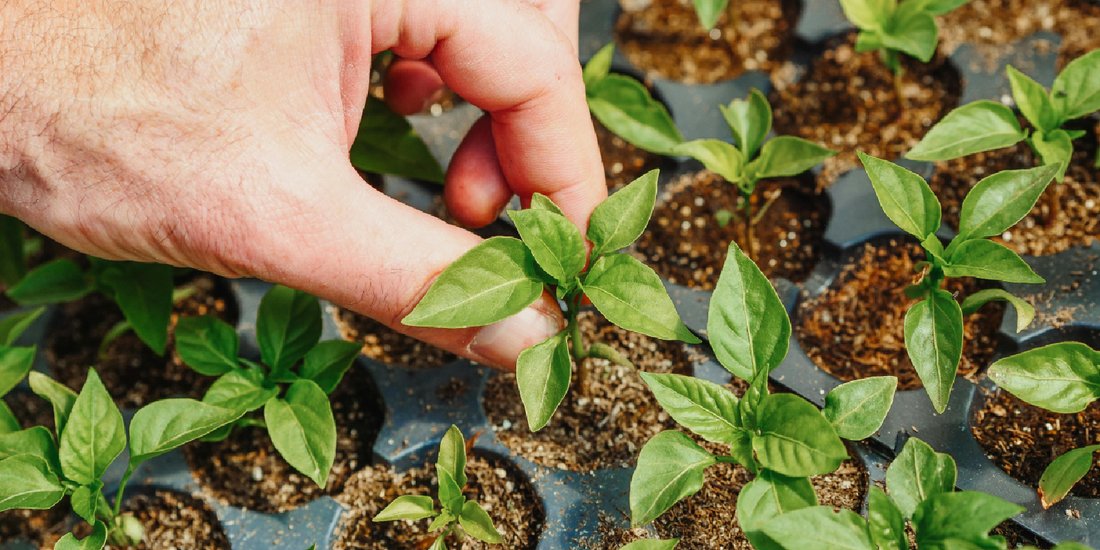
What Happens If You Leave Grow Lights On Too Long?
Share
🌱 Introduction: Shedding Light on Grow Light Duration
As more people turn to indoor gardening for its convenience and beauty, grow lights have become essential tools for plant lovers. Whether you're growing herbs in your kitchen, showcasing foliage in your living room, or nurturing tropical plants year-round, grow lights—like those in the amoyls VerdantGlow S-Shaped 8-Tier Plant Shelf with Grow Lights—play a key role in providing consistent, artificial sunlight.
But here's a question many plant owners ask: Can you leave grow lights on for too long?
The short answer is yes—and it could be doing more harm than good.
In this article, we’ll explore:
- The science of how light affects plant growth
- What happens when grow lights are left on too long
- Symptoms of light stress in plants
- How to determine the ideal light duration
- Best practices for using grow lights with the VerdantGlow shelf
- And how to use timers to create a healthy lighting rhythm for your indoor jungle
Let’s dive in before your green friends suffer from light burnout.
🔬 Part 1: Why Light Matters in Plant Growth
Before we explore overexposure, let’s talk about why light is crucial.
Plants rely on photosynthesis—the process of converting light energy into chemical energy. Through this process, they absorb carbon dioxide, release oxygen, and use the energy to grow leaves, stems, and roots.
But like any life process, balance is key.
Light is measured in photoperiods—the number of light and dark hours a plant receives in a 24-hour cycle. Each plant species has evolved under specific lighting patterns in their native environments. Mimicking these cycles indoors is essential for healthy growth.
☀️ Part 2: What Happens When You Leave Grow Lights On Too Long?
Here’s where things can go wrong.
Leaving grow lights on continuously, or beyond the recommended number of hours, can:
1. Disrupt Plant Circadian Rhythms
Plants, like humans, have internal biological clocks. These rhythms tell them when to grow, rest, and bloom. Without periods of darkness, plants become confused. This can:
- Delay or prevent flowering
- Inhibit root development
- Lead to weak, leggy stems
- Interfere with nutrient uptake
2. Cause Light Stress or Photoinhibition
Too much light triggers photoinhibition, where the plant becomes overwhelmed and slows down photosynthesis. Symptoms include:
- Yellowing or bleaching of leaves
- Burned edges or crispy tips
- Wilting even with proper watering
- Leaf drop or stunted growth
3. Accelerate Dehydration
Light doesn’t just feed plants—it also heats them. Overexposure can cause:
- Faster evaporation from soil
- Excessive transpiration from leaves
- A constant state of stress for the plant
The result? Plants begin to dry out and struggle, even if you’re watering on schedule.
4. Attract Pests and Mold
A constantly lit and warm environment can become a breeding ground for:
- Fungus gnats
- Spider mites
- Powdery mildew
- Root rot (due to drying out topsoil but soggy roots below)
🌼 Part 3: Understanding the Right Light Duration
So, how long should you leave your grow lights on?
The answer depends on your plant type. Here's a quick reference:
|
Plant Type |
Light Duration (Per Day) |
|
Leafy greens & herbs |
12–14 hours |
|
Succulents & cacti |
10–12 hours |
|
Flowering houseplants |
12–16 hours (varies by bloom cycle) |
|
Tropical plants |
10–14 hours |
|
Seedlings |
16–18 hours (then taper down) |
Your amoyls VerdantGlow Shelf features full-spectrum LED grow lights that are safe for long use—but even these need to be regulated to match your plant’s natural cycles.
🕒 Part 4: Why Darkness is Just as Important
Plants don’t “sleep” like animals, but they undergo respiration—a process of breaking down energy and repairing tissues—during darkness.
Without it, plants can’t:
- Repair cell damage
- Develop chloroplasts efficiently
- Regulate their growth hormones (like auxin)
Plants kept under 24-hour lighting often show burned leaves and faded color, indicating stress.
💡 Part 5: How to Use Timers for Optimal Lighting
The easiest way to avoid overexposure is to automate your light schedule.
The VerdantGlow Plant Shelf is compatible with most smart plugs and outlet timers. Here’s how to set it up:
Step 1: Choose Your Timer
Use a digital or smart plug timer that allows precise scheduling.
Step 2: Set Your Photoperiod
Pick your plant’s ideal light hours and set the timer accordingly. Example:
- ON at 7 AM
- OFF at 9 PM (14-hour photoperiod)
Step 3: Observe and Adjust
If you notice stretching or fading, fine-tune the schedule by 1–2 hours. Every plant is different!
🌿 Part 6: The amoyls Advantage – Safe, Stylish, and Smart
With many grow lights, there’s a risk of overheating or UV damage. The VerdantGlow S-Shaped 8-Tier Shelf by amoyls is designed to avoid those pitfalls.
✅ Full-spectrum LED lights: Mimic natural daylight without harmful UV
✅ Built-in heat dispersion: Prevents overheating
✅ Modern S-shaped design: Ensures equal light distribution on all 8 tiers
✅ Space-saving frame: Ideal for corners in small apartments
✅ Timer compatibility: Enables automatic control and optimal schedules
Whether you’re growing pothos, peace lilies, or parsley, this shelf ensures they receive balanced light—and essential darkness.
🔍 Part 7: Signs Your Plants Are Getting Too Much Light
Even with a timer, it’s good to know the warning signs. Watch for:
- Bleached or faded leaves (too much light intensity)
- Brown, crispy edges (overexposure and dehydration)
- Leaf curl or droop (stress)
- Stunted growth (interrupted respiration)
If you spot these, reduce light exposure by 1–2 hours per day and monitor improvement.
🛠️ Part 8: Troubleshooting Tips
If you’ve accidentally left your grow lights on 24/7 for a few days, don’t panic. Here’s how to help your plants recover:
- Return to a normal schedule immediately
- Trim damaged leaves to help plants refocus energy
- Increase humidity if leaves seem dry or curling
- Avoid fertilizing for a week—let plants stabilize
- Use a light meter to ensure intensity isn’t too strong
🌍 Part 9: Real-Life Stories from the amoyls Community
Many amoyls customers have shared stories of their indoor plants thriving once they optimized their light schedule:
“I used to leave my grow lights on for 20 hours thinking ‘more is better.’ My pothos started drooping. After switching to a 14-hour timer, they perked up in just 3 days!”
— Sandra M., Boston
“The VerdantGlow Shelf with a smart timer saved my herbs. I used to overdo it. Now everything grows fuller and greener.”
— Jordan F., San Diego
🌞 Part 10: Conclusion – Give Your Plants Time to Rest
Light is life—but too much of it can be damaging. Like us, plants need a routine that includes both sunshine and sleep. By managing your grow light schedule with intention, you’ll see stronger, healthier growth—and prevent the common pitfalls of overexposure.
With amoyls VerdantGlow S-Shaped Shelf, you get more than a plant stand—you get a smart, stylish, and safe growing environment that supports plant wellness from root to leaf.
So go ahead—set that timer, give your plants their beauty sleep, and watch them flourish!
